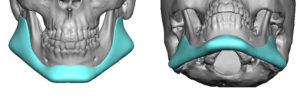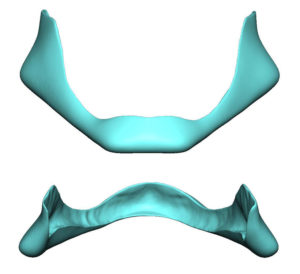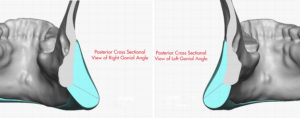Custom jawline implants provide a powerful tool for lower facial change. Covering the entire jawline from angle to angle provides a lot of surface area coverage to create significant augmentation effects.
These powerful implant changes have a double edge sword effect. With the right implant design and dimensions many desired patient jawline effects can be seen. What the right implant design and dimensions are, however, is never exactly clear before surgery in the designing process. There is no formula or design method that is available that can predict what the implant design to final effect result will be. This remains an artistic process that lacks complete clinical predictability.


I have done many custom jawline implants with very satisfying aesthetic outcomes. But I have also seen many other such implants where its effects were unpredicted and had to be revised. In almost every instance it was the jaw angle component that posed the problem. In most instances its appearance not its position on the bone was the issue.
Dr. Barry Eppley
Indianapolis, Indiana



